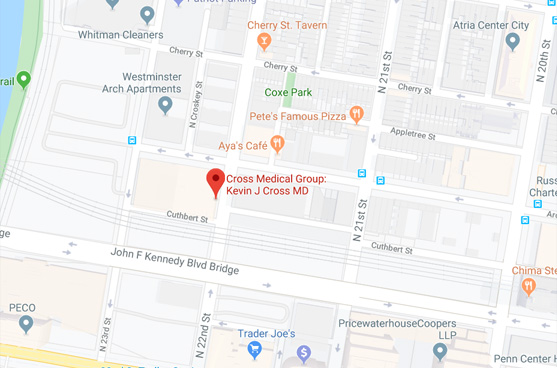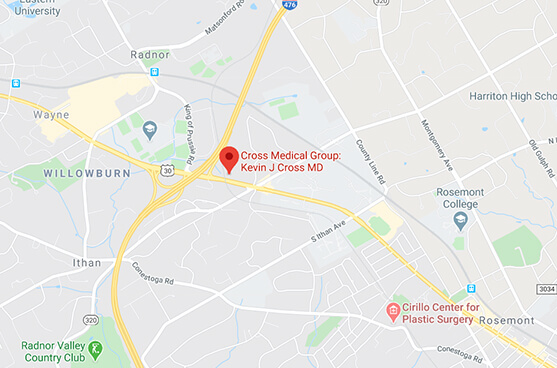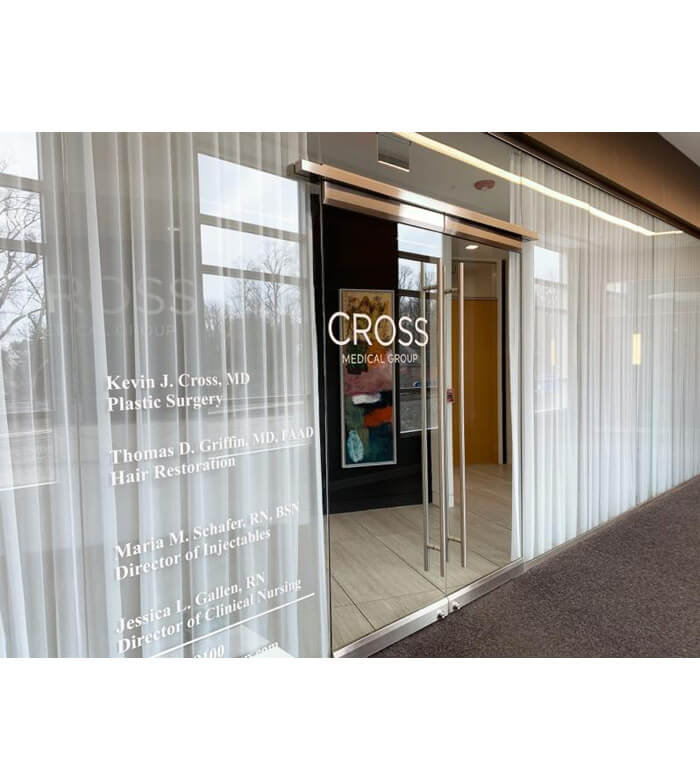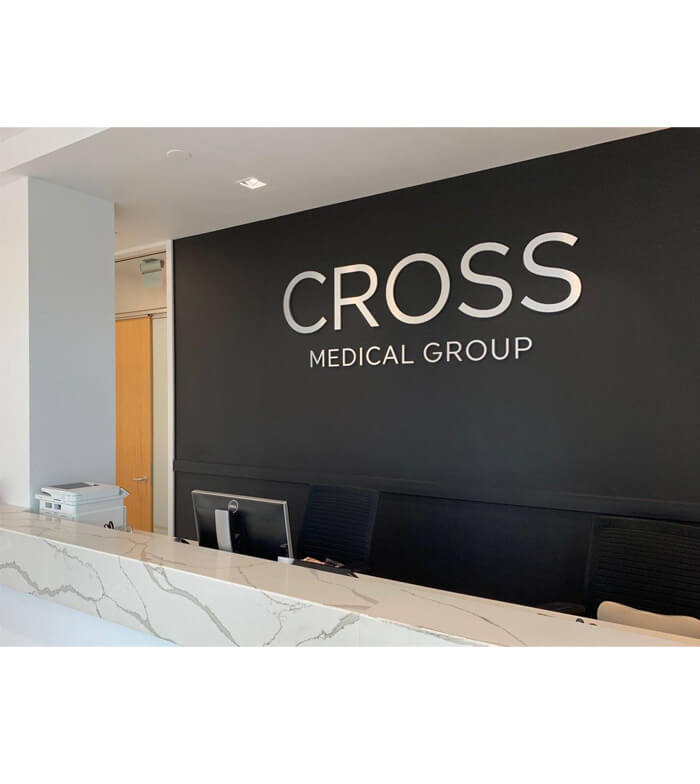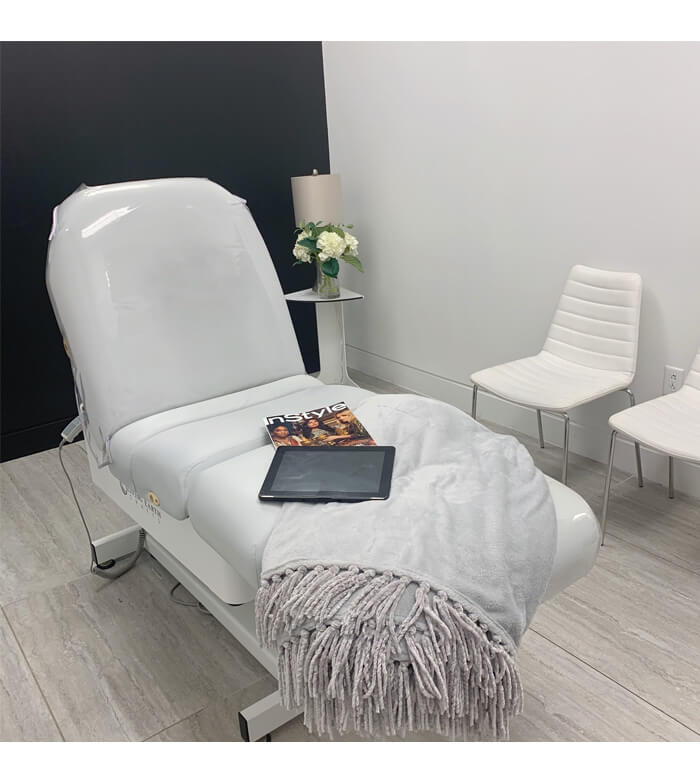Fat Transfer
TAKE FAT FROM ONE AREA AND INJECT IT INTO ANOTHER TO ENHANCE VOLUME AND YOUR APPEARANCE
A fat transfer at the Philadelphia area's Cross Medical Group—also known as autologous fat transfer, fat injections, or fat grafting—involves injecting your own fat cells into certain areas of the face or body to enhance them. A fat transfer can provide many benefits, such as creating a plumper, more youthful appearance, reducing scars, and more. It is also commonly used in reconstructive surgery.
HOW DOES A FAT TRANSFER WORK?
A fat transfer is a minimally invasive type of cosmetic surgery that involves using one's own fat to restore youthful volume in places where age or injury has caused it to be depleted. During the surgical process, fat is moved from one area of the body to another for augmentation and improvement. By taking the fat from one location and introducing it to another, corrections can be made to the face, breasts, hands, torso, and lower extremities. Fat is commonly taken from areas such as the belly, hips, and thighs.
Dr. Kevin Cross can often perform this technically delicate procedure in the office. By using multiple small doses during the fat transfer session, he can provide a more natural and longer-lasting correction. A high concentration of stem cells in the injected fat helps to improve the quality of the surrounding tissues and overlying skin, leaving the skin looking more youthful overall.
Currently, Dr. Cross performs more than 200 fat grafting procedures a year.
WHAT ARE THE BENEFITS OF A FAT TRANSFER?
The principle behind the use of fat transfer for facial rejuvenation is that, with age, the face often loses volume as the natural layers of facial fat start to thin. Dr. Cross equates this to a falling tide at the beach. When the tide goes out and the protective layer of water disappears, all of the irregularities of the rocks, stones, and shells of the beach are revealed.
Similarly, loss of facial volume causes wrinkles, folds, depressions, and shadows once hidden by youthful facial fat to become visible. When Dr. Cross gives back that volume through fat grafting, he replenishes soft, youthful fullness, correcting many of the signs of aging.
A fat transfer provides volume and has very natural-looking results. In addition to reducing wrinkles and depressions, it has many other benefits, such as sculpting higher cheekbones, giving the body a more hourglass shape and feminine profile, reconstructing or increasing the size of the breasts or correcting asymmetry, repairing facial scars, improving the texture and appearance of the skin, and rejuvenating the appearance of the hands and feet. Fat grafting also has therapeutic benefits for the healing of wounds and scars.
SCHEDULE A CONSULTATION
Want to learn more about what to expect from a fat transfer in Philadelphia? Call Cross Medical Group at (215) 561-9100 (Philadelphia) or (610) 688-9100 (Villanova), or send a message online to request a consultation.
WHICH AREAS OF THE BODY CAN BE IMPROVED WITH A FAT TRANSFER?
Patients can get a fat transfer to many areas of the body including the breasts, buttocks, face, hips, lips, cheeks, and under eye area.
WHAT IS THE HISTORY OF FAT TRANSFER?
Fat grafting was first described in the 1800s, but it rose to prominence in the 1990s, when a mentor of Dr. Cross, Dr. Sydney Coleman, pioneered modern fat transfer techniques. Over the past three decades, further refinements have led to greater precision and more predictable results with fat transfer. Since the ’90s, it has been used as a way of improving the appearance of the face breasts, hands, feet, hips, buttocks, and other areas.
WHO IS A GOOD CANDIDATE FOR A FAT TRANSFER?
Facial fat grafting treatments are ideal for patients who have early signs of aging, such as wrinkles or fine lines. You may not be a good candidate for fat transfer treatments if you have certain medical conditions, such as coagulation or lipid metabolism disorders, or low body fat levels. You will need to have enough fat on your body for a fat transfer, especially if you want to enhance a larger area. It’s best for patients who are close to their ideal weight, in good health, are non-smokers or can quit smoking, want subtle and natural-looking enhancements, and maintain realistic expectations.
HOW IS A FAT TRANSFER PROCEDURE DONE?
During facial fat transfer, Dr. Cross harvests fat cells from areas where excess fat may be present (some patients take this opportunity to do a little sculpting in their trouble spots at the same time). The incision used to acquire the fat is so small that it rarely even requires a stitch. Typically, it is just covered by a Band-Aid. Liposuction is the main component used in this procedure. There are three main steps involved: extraction of fat from the donor area with liposuction, processing of the fat, and reinjecting the purified fat into the area the patient wishes to improve.
The adipose fat is extracted with liposuction, then processed and reinjected after it has been purified. Dr. Cross processes the fat in a number of different ways, depending on the needs and anatomy of the individual patient. For instance, fat can be thinned to make it easier to use in fine lines or to provide volume in the lips. Stem cells can be concentrated to help with the appearance of the skin on the surface of the face. It can also be thickened to help provide structural shape to deflated cheeks and weak chins.
The prepared fat is then placed in small syringes, and tiny cannulas are used to meticulously place the fat where desired. No incisions are necessary at this point in the fat transfer process. By customizing the preparation and placement of the fat, Dr. Cross radically minimizes the risk of contour irregularities and maximizes the amount of fat that becomes a living, healthy, long-lasting component of a patient's rejuvenation.
FAT TRANSFER RECOVERY AND AFTERCARE: WHAT HAPPENS AFTER A TREATMENT?
When fat transfer is performed on its own, recovery typically takes just a few days, and patients can resume normal activities very shortly after their procedure. The recovery is very similar to the recovery after BOTOX® and filler injections.
When fat transfer is performed at the same time as other procedures, those other procedures typically dictate the recovery time required.
Any swelling and bruising after the procedure is managed in the office using Dr. Cross's rapid recovery protocol, allowing patients to get back to social activities within days. Patients may need to wear a compression garment for optimal healing and results. The results from a fat transfer can last for good, however not all of the fat cells will survive. The final results are typically seen within six months when the injected fat cells develop a new blood supply. Sometimes multiple fat grafting sessions will be needed, depending on the treatment area and the amount of volume you wish to add.
HOW DOES A FAT TRANSFER COMPARE TO DERMAL FILLERS?
Dermal fillers and fat transfer each have unique benefits. Unlike fat grafting, fillers are substances derived outside of the body and injected into the skin to add volume. Some patients believe that a fat transfer provides softer results in comparison to fillers. However, while fillers provide visible results more rapidly, it can take months for the treatment area to settle and the final results to show after a fat transfer.
WHICH COSMETIC TREATMENTS COMPLEMENT A FAT TRANSFER?
Fat grafting often complements surgical facial procedures. Adding volume made up of a patient's own fat cells can "fine tune" a facelift—a type of facial rejuvenation surgery that involves lifting portions of the face, tightening facial tissues, and removing excess skin for a younger appearance. Fat transfer can also be a vital element of a natural-looking blepharoplasty, which improves the appearance of tired-looking eyes by removing excess skin and fat to create a more youthful, vibrant, and energetic look. A fat transfer can also complement a brow lift, which involves elevating the drooping eyebrows and repositioning the forehead.
SCHEDULE A CONSULTATION
Contact Cross Medical Group to discover more about fat transfer in Philadelphia (215) 561-9100 or Main Line's Villanova (610) 688-9100. You can also send a message online to inquire about a consultation, or for more information.



